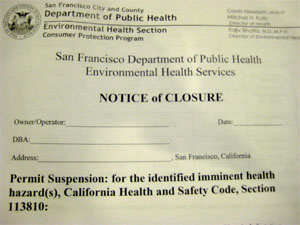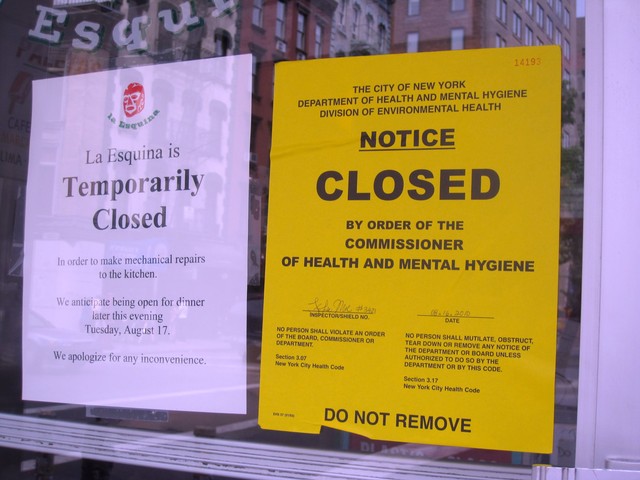
Only a Lord could get away with a report titled, Common Sense Common Safety.
.jpg) It ain’t common sense if it hasn’t been thought of.
It ain’t common sense if it hasn’t been thought of.
The report, published today in the U.K. by Lord Young, the Prime Minister’s adviser on health and safety law and practice, puts forward a series of policies for improving the perception of health and safety, to ensure it is taken seriously by employers and the general public, while ensuring the burden on small business is as insignificant as possible.
Wouldn’t it be better to improve health and safety, and then the perception would be improved – if there was actual data to back up the claims of improved health and safety?
The report is written in a snooty tone that apparently only the British can  achieve, and was deliberated in the context of the compensation culture – those vulgar lawyers looking for recompense for slighted victims.
achieve, and was deliberated in the context of the compensation culture – those vulgar lawyers looking for recompense for slighted victims.
Prime Minister David Cameron said,
“A damaging compensation culture has arisen, as if people can absolve themselves from any personal responsibility for their own actions, with the spectre of lawyers only too willing to pounce with a claim for damages on the slightest pretext.
“We simply cannot go on like this. That’s why I asked Lord Young to do this review and put some common sense back into health and safety. And that’s exactly what he has done.”
The U.K. Food Standards Agency was quick to say the Lord backed their restaurant inspection disclosure scheme.
Under the voluntary Food Hygiene Rating Scheme, each business is given a hygiene rating (from 0-5) when it is inspected by a food safety officer from the business’s local authority. The hygiene rating shows how closely the business is meeting the requirements of food hygiene law.
I was never sure about the 0-5 rating – is 5 good or bad – whereas a letter grading has clearer meaning. The actual report contains some clues:
The good Lord says that local authority participation in the Food Standards Agency’s Food Hygiene Rating Scheme be made mandatory, and that usage of the scheme by consumers by harnessing the power and influence of local and national media.
He also says the voluntary display of ratings should be reviewed after 12 months and, if necessary, make display compulsory – particularly for those businesses that fail to achieve a ‘generally satisfactory’ rating.
“I welcome the FSA’s decision to drop the unfortunate title ‘scores on the doors’, which has been used in the past for this initiative, and its decision to  drop the use of stars, which have a connotation of cost and service. I am pleased that they have decided instead to use a simple numerical scale with appropriate descriptors. These decisions were based on the results of independent research with consumers and this is what they found to be clearest and easiest to use.”
drop the use of stars, which have a connotation of cost and service. I am pleased that they have decided instead to use a simple numerical scale with appropriate descriptors. These decisions were based on the results of independent research with consumers and this is what they found to be clearest and easiest to use.”
Scores on doors may be too direct for the Lord; I hope the Aussies keep using it. And I look forward to the 0-5 studies being published in a peer-reviewed journal so mere mortals can review the research.
The good Lord also cites the Los Angeles example of restaurant inspection disclosure – they use letter grades – and inflates an already dubious estimate by stating there was a 20 per cent drop in the number of people being admitted to hospital for food related illnesses after the introduction of the letter grades.
Restaurant inspection is a snapshot in time and disclosure is no panacea. It can boost the overall culture of food safety, hold operators accountable, and is a way of marketing food safety so that consumers can choose.

 cramped rooms and hear them wrangle over infractions, in a ritual reminiscent of visiting the principal’s office.
cramped rooms and hear them wrangle over infractions, in a ritual reminiscent of visiting the principal’s office.(1).png) Wales, welcomed the principle of the scheme but said it was under-mined by the practice of voluntary display
Wales, welcomed the principle of the scheme but said it was under-mined by the practice of voluntary display(1).jpg) customers going in – is a very strong incentive for them to up their game."
customers going in – is a very strong incentive for them to up their game.".jpg) employers and employees. It is intended to put pressure on the restaurant industry to improve conditions for its workers. The Restaurant Opportunities Centers United is one of two groups presenting the report at a Congressional briefing today.
employers and employees. It is intended to put pressure on the restaurant industry to improve conditions for its workers. The Restaurant Opportunities Centers United is one of two groups presenting the report at a Congressional briefing today. inspections and help diners more easily find a restaurant’s health score.
inspections and help diners more easily find a restaurant’s health score. cleaned with or soaked in? They usually point to some sorta sanitary solution, but aren’t too knowledgeable about how often it’s changed or cleaned. Same with those aprons the chefs are always wiping their hands on – I have dreams of large sample sizes.
cleaned with or soaked in? They usually point to some sorta sanitary solution, but aren’t too knowledgeable about how often it’s changed or cleaned. Same with those aprons the chefs are always wiping their hands on – I have dreams of large sample sizes. illness is not thought to be connected to the recent nationwide egg recall.
illness is not thought to be connected to the recent nationwide egg recall. DNAinfo reports
DNAinfo reports But “combustible ceilings and inadequate egress” in those same area’s provoked the Department of Building’s spring shutdown.
But “combustible ceilings and inadequate egress” in those same area’s provoked the Department of Building’s spring shutdown. It is entirely possible to grow food, and clean it and cook it all by yourself – and completely mess things up and make people barf.
It is entirely possible to grow food, and clean it and cook it all by yourself – and completely mess things up and make people barf. the bedazzled throngs."
the bedazzled throngs."